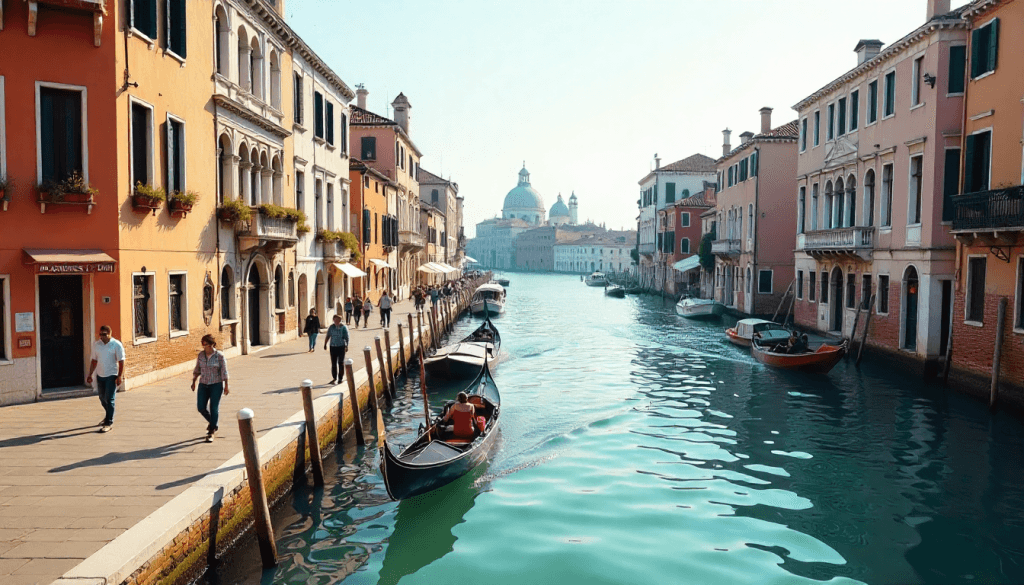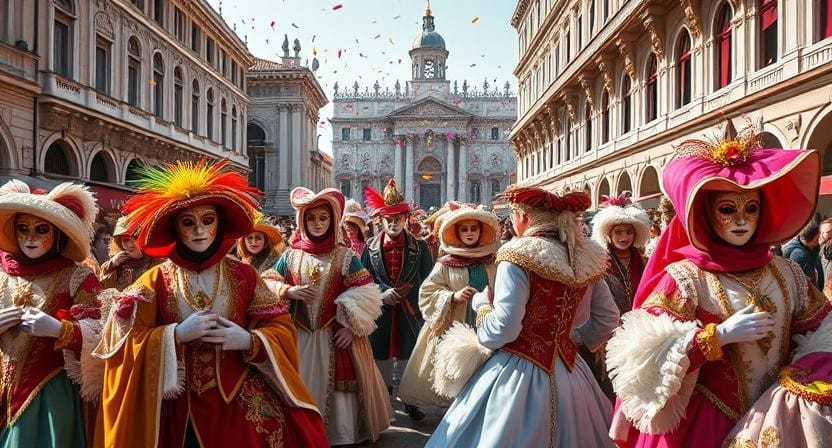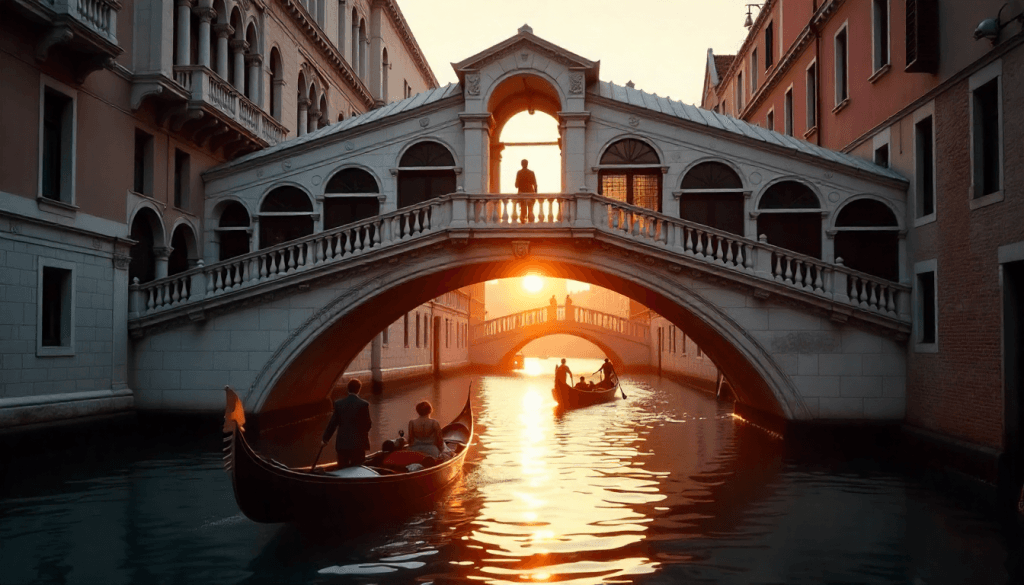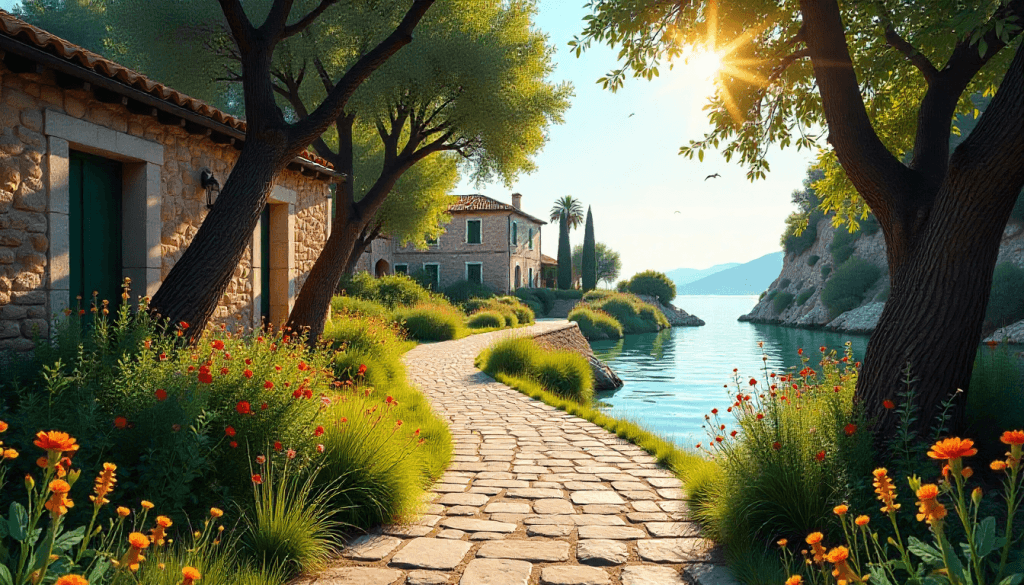The First-Timer’s Guide to Things to Do in Venice (With Insider Tips)
Venice is often celebrated as one of the most stunning and enchanting places on the planet, and discovering unique activities to enjoy there can elevate your trip from the mundane to the extraordinary. Did you know this magical city is entirely car-free? Instead, we’ll be strolling through its charming streets or catching vaporettos (water buses) to glide along the beautiful canals
From my own experiences in Venice, I’ve found that spending 2 to 4 days is just right to truly soak in the essence of this floating city. However, to make the most of your visit, a bit of planning goes a long way. Whether you’re captivated by historical sites like St. Mark’s Square, home to the impressive Doge’s Palace and St. Mark’s Basilica, or intrigued by unique experiences like a visit to Caffè Florian—the world’s oldest café, which opened its doors in 1720—every activity in Venice offers a peek into its rich cultural heritage.
Above all, seeing Venice from the water is a must. Locals will tell you that exploring Venice solely on foot is a missed opportunity since this city is built on canals and is best appreciated from the water. From the nearly 1,000-year-old Rialto Farmers Market to the towering St. Mark’s Tower, which stands at 320 feet (making it the fifth tallest bell tower in Italy), we’ll take you through all the must-see attractions and hidden treasures in this comprehensive guide for first-time visitors.
Getting Oriented: What You Should Know Before You Go
If you’re gearing up for your first trip to Venice, a little planning goes a long way. Unlike many other European cities, Venice requires you to think carefully about things like timing, transportation, and where to stay to truly enjoy everything it has to offer.
Looking for the best time to explore Venice?
the best months to go are April, May, June, September, and October. During this time, you’ll enjoy lovely weather and a good mix of visitors, making it a great time to explore. Just keep in mind that these months are also the busiest and can be a bit pricier. If you’re looking to save some cash, consider visiting between November and March. You’ll find lower prices, shorter lines, and a lot fewer tourists.
In the summer, temperatures are quite pleasant, usually in the high 70s and 80s, especially compared to other cities in Italy. Most hotels have air conditioning from mid-May to September, which is a must for those hot summer days.
For those traveling in winter, be ready for mild temperatures, with lows in the 30s and 40s. This season can bring some acqua alta (high water), especially in November and December. But don’t let that deter you! Venice takes on a magical, misty vibe during this time, making it perfect for stunning photos and peaceful strolls.

February offers a unique opportunity to experience Carnival, a spectacular celebration with masquerade balls and elaborate costumes. The city transforms into a stage with locals and visitors donning ornate masks and attending special events. Although hotel prices rise even in low season, witnessing this centuries-old tradition is worth considering.

Looking for ways to get around without relying on cars?
Walking is truly the best way to uncover the hidden gems of Venice. The city is pretty compact—you can stroll from Santa Lucia railway station to Piazza San Marco in just about 30 minutes. Getting lost in the winding maze of narrow streets and charming bridges is almost a given, but those unexpected detours often lead to the most genuine experiences.
Vaporettos, or water buses, are the lifeline of Venice’s public transport, linking all the main spots across the six sestieri (neighborhoods) and nearby islands. For tourists, the most handy routes are lines 1 and 2, which glide along the Grand Canal. While they’re convenient, keep in mind that vaporetto rides can be a bit pricey—a single ticket will set you back €9.50 and is good for 75 minutes. If you’re planning to stay longer, it might be worth it to grab a pass: €25 for one day, €35 for two days, €45 for three days, or €65 for a week.
For a true Venetian experience that won’t break the bank, hop on a traghetto—a gondola ferry that crosses the Grand Canal at key points for just €2. These boats run from around 9am to 6pm at various crossing spots like Santa Sofia, San Tomà, and Santa Maria del Giglio.
Water taxis are all about speed and convenience, but they come with a hefty price tag—fares start at €15 and can add up quickly. However, they can accommodate up to 10 people, making them a more budget-friendly option for groups.
Looking for the best places to stay as a first-timer?
If you’re visiting for the first time, the San Marco district is definitely the best spot to stay. It’s centrally located, so you’ll be just a short stroll away from iconic places like St. Mark’s Square, Doge’s Palace, and the Basilica. You’ll find a range of hotels here, from mid-range options to luxurious stays, but keep in mind that prices tend to go up the closer you get to Saint Mark’s
On the other hand, Castello is a fantastic alternative—especially the western part near San Marco. You’ll get to enjoy many of the perks of being in the center, but with fewer tourists and a more genuine vibe. This neighborhood boasts peaceful residential streets and lovely canals, all while keeping you close to the main attractions.
If you’re arriving by train or bus, you might want to look for places to stay in Santa Croce or the western part of Cannaregio, which are near the station. While these areas are a bit further from the main sights, they offer great transport links and usually better prices.
No matter where you decide to stay, it’s really important to book your accommodations well ahead of time, especially if you’re planning to visit during peak season or for special events like Carnival or the Venice Film Festival.
Discover the rich tapestry of history woven into Venice’s cultural landmarks
A trip to the enchanting floating city just wouldn’t be the same without diving into its stunning historical sites. The architectural gems of Venice share captivating tales of its glorious past as a maritime republic and a hub of culture.
St. Mark’s Basilica and Doge’s Palace
Nestled along the banks of the Grand Canal, Ca’ Rezzonico stands as a stunning example of Venetian Baroque architecture and is an absolute must-visit for anyone keen on exploring the city’s vibrant cultural heritage. Originally crafted by the talented Baldassare Longhena and completed in the 18th century, this magnificent palace now serves as the Museum of 18th-Century Venice, providing a fascinating peek into the lavish lifestyle of the Venetian aristocracy.
As you step inside, you’ll be greeted by beautifully restored rooms adorned with period furniture, breathtaking frescoes, and masterpieces from renowned artists like Giambattista Tiepolo. The grand ballroom, along with the stunning Murano glass chandeliers, will leave you in awe.
Just a short stroll or a quick vaporetto ride away lies the iconic Doge’s Palace (Palazzo Ducale), a true gem of Gothic architecture that once functioned as the political and judicial center of the Venetian Republic. Take your time wandering through the grand halls and marvel at monumental works by Tintoretto and Veronese, including the colossal « Paradise » in the Council Chamber — one of the largest oil paintings ever created.
Bridge of Sighs and its story
Connected to the Doge’s Palace is the iconic Bridge of Sighs (Ponte dei Sospiri), a small enclosed limestone bridge with an intriguing history. Its name originated from the sighs of prisoners who, while crossing from the interrogation rooms in the palace to their cells, caught their final glimpse of Venice through the bridge’s tiny windows.
Ironically, this structure associated with sorrow has become a symbol of romance. Local legend claims that couples who kiss beneath the bridge at sunset while riding a gondola will enjoy eternal love. Subsequently, this tradition attracts countless couples seeking romantic memories in Venice.
The best views of the bridge can be found from Ponte della Paglia along the waterfront. Alternatively, walking inside the bridge is possible with a Doge’s Palace ticket.

Rialto Bridge and the market nearby
As Venice’s oldest and most famous bridge spanning the Grand Canal, the Rialto Bridge (Ponte di Rialto) has served as a commercial hub since 1591. Its distinctive stone arch design replaced earlier wooden bridges that repeatedly collapsed.
The bridge itself houses small shops selling Venetian crafts and souvenirs. Consequently, it gets crowded during peak hours, so visit early morning or evening for a more peaceful experience.
Just north of the bridge lies the Rialto Market (Mercato di Rialto), a vibrant food market operating since 1097. The market opens Tuesday through Saturday, with the best selection available early morning when local chefs select the freshest ingredients. Here, you’ll find colorful displays of seasonal produce, along with the fascinating fish market (Pescheria) where vendors showcase the day’s catch from the Adriatic Sea.
Indeed, exploring these landmarks provides not just spectacular sightseeing but a deeper understanding of Venice’s historical significance and cultural heritage.
See Venice Like a Local
Beyond the grandeur of Venice’s major attractions lies an entirely different city—one where locals shop at floating markets, children play in quiet squares, and gondoliers gather for morning coffee. The most authentic Venice experiences happen away from the tourist crowds.
Wander off the tourist path
One of the greatest things to do in Venice is simply getting lost in its quieter districts. As impressive as the landmarks are, what makes Venice truly magical is what exists between them—charming canals, quiet corners, and daily life unfolding naturally. Take time to stroll aimlessly through secondary canals where the only sound is water gently lapping against docked boats. These unplanned detours often lead to the most rewarding discoveries.
Neighborhoods to explore: Cannaregio, Dorsoduro
Cannaregio, home to most of Venice’s actual residents, offers authentic experiences far from tourist throngs. This northern neighborhood houses Europe’s oldest Jewish Ghetto, complete with a historic « red pawn shop » once used by residents. For photography enthusiasts, seek out Calle Varisco—Venice’s narrowest street at just 53cm wide. Don’t miss Tintoretto’s pink Gothic house or the Campo dei Mori with its four distinctive statues.
Dorsoduro balances tranquil daytime atmosphere with vibrant nightlife. Visit Campo Santa Margherita to find local children playing and residents enjoying spritz at outdoor cafés. This district harbors a truly unique Venetian treasure—a floating grocery store selling produce directly from a boat at Rio San Barnaba. For a perfect sunset spot, head to Punta della Dogana where the Grand Canal meets the lagoon, offering stunning views across to San Marco.
Where locals eat and drink
For genuine Venetian dining experiences, seek out « bacari »—traditional wine bars serving « cicchetti » (small bites). In Cannaregio, follow locals to Fondamenta della Misericordia, lined with authentic restaurants. Gam Gam offers kosher Venetian cuisine with Jewish influences.
Dorsoduro hides exceptional local haunts like Cantina del Vino già Schiavi, where locals gather for prosecco and €1.20-€1.80 cicchetti. Nearby, Osteria Al Squero serves legendary €2.50 Aperol Spritz. For an elegant setting with canal views, Taverna del Remer near Rialto offers both atmosphere and excellent cuisine.
For a truly local morning ritual, visit Bar Centrale in Santa Margherita where gondoliers gather before work, discussing their day over coffee and cornetto in rapid Venetian dialect.
Savor the Flavors of Venice
Exploring Venice’s culinary landscape offers a delicious adventure that reveals the city’s maritime heritage and cultural influences. From tiny wine bars to artisanal gelaterias, food becomes another way to experience authentic Venetian life.
Try cicchetti and local wine
Venetian cuisine shines brightest in its cicchetti culture—small, flavorful bites served in traditional wine bars called bacari. Similar to Spanish tapas but with their own Venetian character, these savory treats typically cost between €1.50 and €3 each. At Bacaro Risorto in Castello, I recommend trying baccalà mantecato, a creamy salt cod spread often served with freshly baked crostini. Other popular cicchetti include fried sardines, crostini with anchovies, and delicious prosciutto.
Pair your cicchetti with an ombra di vino—a small glass of local wine costing as little as €2. The term « ombra » (shadow) originated from wine vendors in Piazza San Marco who followed the shade of the bell tower to keep their barrels cool. For a truly local experience, visit Cantina Do Spade, where the briny deep-fried sardines contrast wonderfully with sour onions.
Best places for gelato and coffee
For exceptional gelato, head to Gelato di Natura, where natural ingredients and traditional methods create perfectly smooth, slightly melty textures. Their signature flavor, Canova, blends pistachio, praline, and chocolate. SuSo ranks highly for creative options like Manet—a mix of gianduja, pistachio cream, and salt.
Coffee enthusiasts must visit Torrefazione Cannaregio, a historic café operating since 1930 that still roasts beans by hand. For a more elegant experience, try Museo Correr Cafe on the first floor of the Royal Palace, overlooking St. Mark’s Square.
Seafood dishes to try
Venice’s lagoon provides exceptional seafood featured in traditional dishes. Don’t miss sarde in saor—fried sardines marinated with onions, pine nuts, and raisins for a sweet-sour flavor. Baccalà mantecato transforms dried salted cod into a tasty cream served with bread or polenta. Moreover, Venetian fried seafood combines sardines, prawns, calamari and scallops, sometimes featuring tender moeche (baby crabs) in early autumn and spring.
Join a food tour or cooking class
Finally, understand Venetian cuisine more deeply through food tours or cooking classes. Expert guides will lead you through the Rialto Market to select fresh ingredients before teaching traditional recipes. Many classes focus on making fresh pasta, risotto, or classic tiramisu. These immersive experiences provide cultural insights alongside culinary skills—a perfect thing to do in Venice for food lovers.
Make Time for the Islands
The Venetian Lagoon holds treasures beyond the main city itself. A short boat ride reveals islands with distinct personalities, each offering unique experiences that complement your Venice itinerary.
Murano: Watch glassblowers at work
Just a few minutes from Venice by vaporetto, Murano has been the center of glass production since the 13th century. At Original Murano Glass (OMG), I watched master artisans transform molten glass into delicate vases and prancing horses. Most demonstrations require reservations, with tickets starting at €5 per adult, while children under 14 enter free. For a more immersive experience, consider a hands-on glass blowing workshop where you can create your own piece, though these typically last 2.5 hours.
Burano: A photographer’s dream
This rainbow-colored island instantly recognizable by its vibrant houses is perhaps the most photographed spot in the lagoon. Legend claims fishermen painted their homes in bright colors to spot them through thick fog. For the best photos, visit early morning before day-trippers arrive or head to Tre Ponti (Three Bridges) for classic canal views. Beyond photography, Burano is renowned for its handcrafted lace tradition dating back to the Renaissance.
Torcello: Peaceful and historic
As Venice’s birthplace, Torcello offers a glimpse into the lagoon’s earliest settlements. Once home to approximately 20,000 residents, today only about a dozen people inhabit this tranquil island. The Cathedral of Santa Maria Assunta, founded in 639, features magnificent Byzantine mosaics, while the mysterious Devil’s Bridge (Ponte del Diavolo) stands as one of the few Venetian bridges without railings.

Tips for a smooth island day trip
Ferry boats (vaporetti) connect all islands, operating from 6am until 10:30pm daily. For value, purchase a 24-hour ticket (€24) or 12-hour ticket (€18). Line 12 from Fondamente Nove serves Murano, Burano, and potentially Torcello. Alternatively, organized tours visit all three islands in one day, often including glass blowing and lace-making demonstrations. To avoid crowds, start early—especially for Burano, which gets notably busier after the second boat arrives.
Conclusion
Venice captivates first-time visitors with its unique blend of history, culture, and enchanting waterways. Throughout this guide, we’ve explored how to navigate this magical floating city effectively.
My experiences have shown that careful planning makes all the difference when visiting Venice. Choosing the right season affects not only your budget but also your overall experience. Additionally, understanding transportation options helps maximize your time – whether walking through narrow streets or hopping on vaporettos along the Grand Canal.
Beyond the must-see landmarks like St. Mark’s Basilica and the Doge’s Palace lies the heart of authentic Venice. Therefore, make time to wander through quieter neighborhoods such as Cannaregio and Dorsoduro. These areas reveal daily Venetian life away from tourist crowds.
Food enthusiasts will certainly appreciate Venice’s culinary treasures. From cicchetti served in traditional bacari to fresh seafood dishes that highlight the city’s maritime heritage, Venetian cuisine offers memorable flavors at every turn.
Last but not least, venture beyond the main islands. Murano’s glass artisans, Burano’s colorful houses, and Torcello’s ancient cathedral provide fascinating glimpses into different aspects of Venetian culture and history.
Venice rewards curious travelers who balance must-see attractions with unexpected discoveries. Armed with these insider tips, your first visit to this extraordinary city will undoubtedly leave you planning your return before you’ve even departed. After all, Venice isn’t just a destination – it’s an experience that changes you forever.
Share this content:


